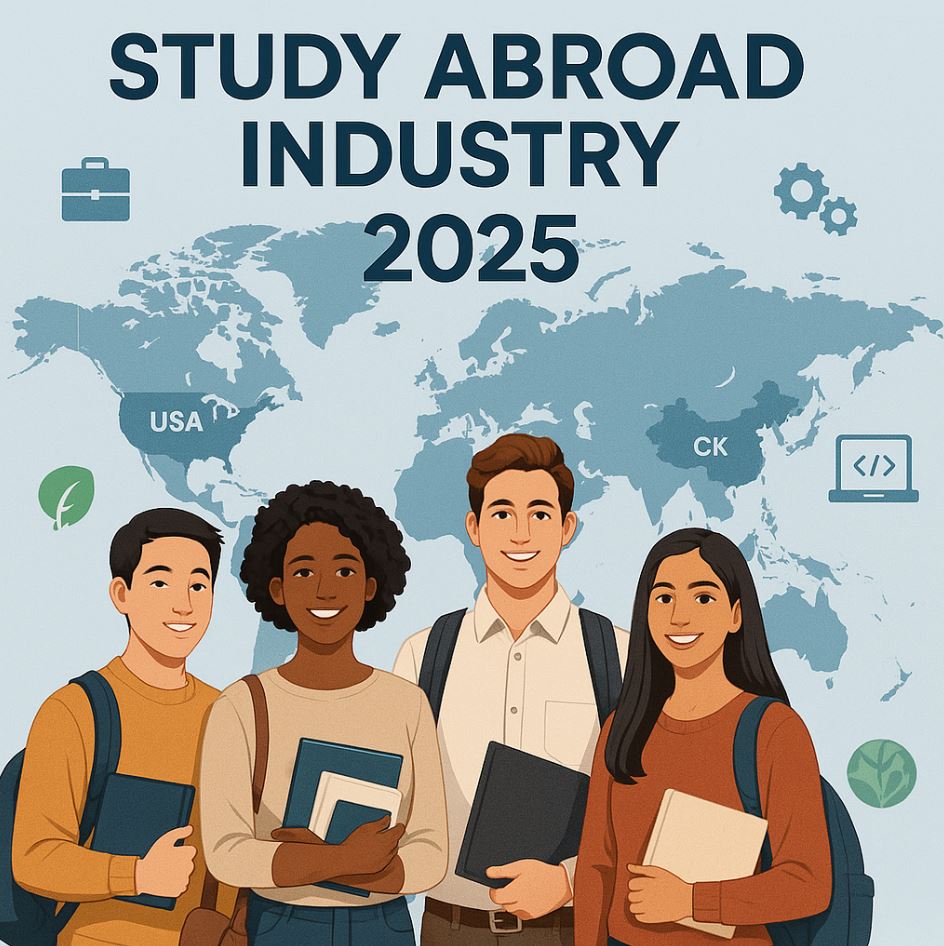The Ultimate 2025 Guide to Education in the U.S.: Trends, Policies, and Opportunities for Students
The education system in the United States continues to evolve, driven by technological advancements, policy changes, and shifting societal needs. In 2025, students, parents, educators, and policymakers face both exciting opportunities and complex challenges. This comprehensive guide explores the latest trends in U.S. education, critical policy updates, and key opportunities that define the current academic landscape.
📘 Overview of the U.S. Education System
The United States education system is decentralized, meaning that individual states and local governments control most of the decision-making. It is divided into several key levels:
- Pre-Kindergarten (Pre-K)
- Elementary School (Grades K–5)
- Middle School (Grades 6–8)
- High School (Grades 9–12)
- Postsecondary Education (Colleges, Universities, Trade Schools)
In 2025, over 56 million students are enrolled in K-12 public and private schools, while nearly 20 million students are pursuing higher education.
📈 2025 Education Trends in the U.S.
1. Blended and Hybrid Learning Models
Post-pandemic, blended learning has become the new norm. In 2025:
- Schools integrate in-person and online education to increase flexibility and personalization.
- EdTech platforms like Khan Academy, Coursera, and Google Classroom are essential tools in classrooms.
- Adaptive learning software tailors lessons to individual students’ strengths and weaknesses.
2. Focus on Mental Health and Wellbeing
Schools across the U.S. are increasing their emphasis on student mental health through:
- On-campus counseling services
- Social-emotional learning (SEL) programs
- Federal funding for mental health staff and wellness training
This trend recognizes that emotional well-being is crucial for academic success.
3. Emphasis on Career and Technical Education (CTE)
To address labor shortages and diversify career paths, many high schools now offer:
- Vocational programs in healthcare, IT, manufacturing, and trades
- Partnerships with local businesses and community colleges
- Apprenticeship and internship programs starting as early as Grade 10
📜 Key Education Policies and Legislative Updates in 2025
1. FAFSA Simplification and Student Loan Reforms
In 2025, the federal government has:
- Streamlined the Free Application for Federal Student Aid (FAFSA)
- Expanded eligibility for Pell Grants
- Continued efforts to address student debt relief and repayment flexibility
This improves access to financial support for millions of students.
2. Universal Pre-K Initiatives
Several states have launched or expanded universal pre-kindergarten programs, focusing on:
- Early childhood development
- Academic preparedness
- Reducing educational inequality
These initiatives aim to improve long-term academic outcomes, particularly in low-income communities.
3. Expansion of School Choice Programs
Public charter schools, magnet schools, and school voucher programs are expanding:
- Some states now allow Education Savings Accounts (ESAs) for private education expenses
- Parents can choose the best-fit learning environment for their children
- However, this shift has also sparked debates about public school funding equity
🎓 Higher Education Landscape in 2025
1. Rise of Online Degrees and Microcredentials
Online learning is no longer a backup option—it’s a primary choice for many:
- Accredited universities offer fully online bachelor’s and master’s programs
- Microcredentials and certificates from platforms like edX and LinkedIn Learning are industry-recognized
- Students prioritize flexibility, affordability, and direct career relevance
2. Community Colleges and Affordability
Community colleges continue to play a vital role in:
- Providing affordable pathways to a degree
- Offering two-year associate degrees and transfer options to four-year universities
- Delivering workforce training aligned with local employment needs
Some states now offer tuition-free community college for qualifying students.
📊 Data and Statistics: U.S. Education in 2025
| Category | Statistics (2025) |
|---|---|
| K-12 Enrollment | 56.4 million students |
| Public School Teachers | Over 3.2 million |
| High School Graduation Rate | 87.9% (national average) |
| Postsecondary Enrollment | 19.8 million students |
| Average Student Loan Debt | $29,200 per borrower |
| Pell Grant Maximum Award | $7,900 |
| Tuition-Free Community Colleges | Available in 16 states |
💡 Opportunities for Students in 2025
1. Federal and State Financial Aid
- FAFSA remains the gateway to federal aid like Pell Grants and Work-Study programs.
- Many states offer merit- and need-based grants, scholarships, and tuition waivers.
- New college affordability initiatives support low- and middle-income families.
2. Scholarships and Private Funding
- Students can access thousands of private scholarships through platforms like:
- Fastweb
- Scholarships.com
- College Board’s BigFuture
- STEM, minority, and first-generation scholarships are growing in number and value.
3. Study Abroad and International Exchange
- U.S. colleges have resumed and expanded international exchange programs post-COVID.
- Scholarships like Gilman, Fulbright, and Boren support students who study or intern abroad.
- These programs build global competencies and language skills.
📚 Innovations in Teaching and Learning
1. AI-Powered Learning Tools
- Software like ChatGPT, Grammarly, and Photomath assist with writing, math, and research.
- AI tutors offer 24/7 support and personalized explanations.
- Teachers use AI for grading, lesson planning, and curriculum customization.
2. Gamification and VR in the Classroom
- Gamified learning apps make math, history, and science fun and interactive.
- Virtual Reality (VR) headsets enable immersive learning in biology labs, historical sites, and more.
- These tools improve engagement and retention across age groups.
📍 Challenges Facing U.S. Education in 2025
Despite significant progress, challenges remain:
- Teacher shortages, especially in rural and urban schools
- Digital divide affecting underserved communities
- Ongoing debates over curriculum standards and educational equity
- Need for continued investment in infrastructure and broadband access
🔮 The Future of Education in the U.S.
Looking beyond 2025, we anticipate:
- Increased personalized learning powered by data and AI
- Greater emphasis on life skills, emotional intelligence, and entrepreneurship
- Continued push for universal access to quality education, from Pre-K to college
Conclusion
The U.S. education system in 2025 reflects a blend of innovation, reform, and adaptation. From blended classrooms and career training programs to expanded access to financial aid and online learning, the landscape is rich with opportunity. Understanding the latest trends and policies is essential for students, families, and educators navigating today’s academic journey and preparing for tomorrow’s workforce.
Keywords: U.S. education trends 2025, education policy USA, FAFSA 2025, online learning USA, student opportunities 2025, American schools, higher education U.S.





















